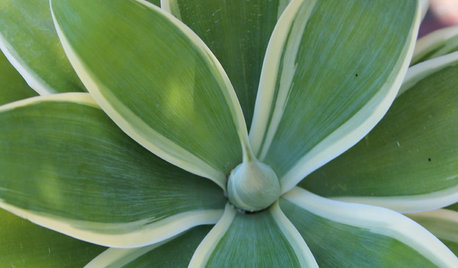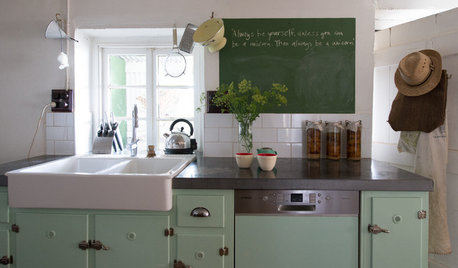Forgiving, greenhouse-tolerant suggestions?
Karen Pease
16 years ago
Related Stories

HOUSEPLANTSMeet a Long-Lasting Houseplant With a Forgiving Heart
Low light and little watering won't scar Zee Zee plant for life; this East Africa native has a tolerant nature and an exotic beauty
Full Story
HOUSEPLANTS8 Houseplants You Can't Kill
They're forgiving and let you forget. Houseplants don't get any easier than this
Full Story
PETSHow to Help Your Dog Be a Good Neighbor
Good fences certainly help, but be sure to introduce your pup to the neighbors and check in from time to time
Full Story
CALIFORNIA GARDENINGCalifornia Gardener's April Checklist
Outsmart droughts with water-savvy plants and sustainable approaches that suit the landscape
Full Story
HOUSEPLANTSOne Pot, One Big Shot of the Tropics
Give your rooms exotic flair in a single stroke. Tall Kentia palm fits the tropical bill beautifully
Full Story
LANDSCAPE DESIGNGreat Design Plant: Retreat to the Shade of Hardy Catalpa
Big foliage and a towering height provide a shady respite in summer, but that's not all hardy catalpa offers dedicated gardeners
Full Story
GARDENING GUIDESTop 12 Summer-Blooming Perennials for Deer-Resistant Drama
Can you have garden color, fragrance and exciting foliage with hungry deer afoot? These beauties say yes
Full Story
HOUZZ TOURSMy Houzz: Ease and Coziness in Rural Australia
Nothing is ‘too fancy or perfect’ in this 150-year-old bluestone farmhouse, but everything sure is warm and inviting
Full Story
HOUSEPLANTS10 Top Plants to Grow Indoors
Brighten a room and clean the air with a houseplant that cascades artfully, stretches toward the ceiling or looks great on a wall
Full Story
CONTAINER GARDENSHappy Houseplants, Happy People
Potted plants add life and beauty to a room. Learn easy ways to keep them healthy
Full StorySponsored






bob123how
Karen PeaseOriginal Author
Related Professionals
Comstock Park Landscape Architects & Landscape Designers · Forest Acres Landscape Architects & Landscape Designers · Lyons Landscape Architects & Landscape Designers · Allentown Landscape Contractors · Jackson Landscape Contractors · Aloha Landscape Contractors · Alpharetta Landscape Contractors · Bell Gardens Landscape Contractors · Dickinson Landscape Contractors · Mercedes Landscape Contractors · Natick Landscape Contractors · Reedley Landscape Contractors · Rochester Landscape Contractors · Wilsonville Landscape Contractors · Glenn Heights Swimming Pool Buildersbob123how
mutant_hybrid
Karen PeaseOriginal Author
petiolaris